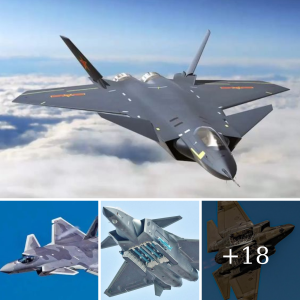The SR-71 Blackbird, an aircraft that remains a symbol of speed, innovation, and military dominance, is one of the most iconic planes ever built. Known for its stealth capabilities and record-breaking speeds, the SR-71 was a pioneering reconnaissance aircraft developed by Lockheed Martin’s Skunk Works division. Even though it was retired over two decades ago, the Blackbird’s legacy continues to inspire fascination among aviation enthusiasts and experts alike.

A Revolution in Aerial Reconnaissance
Designed during the height of the Cold War, the SR-71 Blackbird was built to fly higher and faster than any other aircraft in the world. Its primary mission was to gather intelligence over hostile territories, and it did so without the need for traditional armaments. The Blackbird’s defense mechanism? Speed. Flying at Mach 3 (three times the speed of sound) at altitudes over 85,000 feet, the SR-71 could outrun threats such as surface-to-air missiles. By the time an enemy missile was launched, the Blackbird would have already sped out of its effective range.

Breaking Speed Records
The SR-71 wasn’t just fast—it was the fastest manned air-breathing jet ever to take to the skies. In 1976, it set an official world record for the fastest airspeed at an astonishing 2,193.2 mph. To this day, no other aircraft has surpassed the Blackbird’s speed, a testament to the cutting-edge technology of the 1960s.
What made the SR-71 so special was its unique design. With its sleek, futuristic appearance, the Blackbird had long, slender wings and a streamlined fuselage, optimized for high-speed, high-altitude performance. The use of titanium for much of its construction allowed it to withstand the extreme heat generated during supersonic flight.
Stealth Before Stealth Was a Thing
Though the SR-71 predated modern stealth aircraft like the F-22 Raptor and the B-2 Spirit, it incorporated groundbreaking stealth technology for its time. Its radar signature was much smaller than conventional aircraft, making it harder for enemy radars to detect. Combined with its unmatched speed, the Blackbird’s stealth capabilities ensured that it could complete its missions with minimal risk.
However, it wasn’t entirely invisible to radar. The Soviet Union and other adversaries often detected the Blackbird, but it was nearly impossible to target or intercept the plane due to its speed. This earned the SR-71 the reputation of being “untouchable” during its reconnaissance missions.
Life Inside the Blackbird
Piloting the SR-71 was no ordinary task. The extreme speeds and altitudes demanded specialized training, equipment, and even suits. The pilots wore pressure suits similar to those used by astronauts to protect them from the high-altitude environment, where air pressure was dangerously low, and temperatures could vary by hundreds of degrees. The cockpit temperature alone could reach up to 600°F during Mach 3 flight, while the outside air was freezing cold at such high altitudes.
The crew, consisting of a pilot and a reconnaissance systems officer, had to rely on specialized navigation and surveillance equipment to complete their missions. Their work was often carried out in secret, as the Blackbird flew in highly sensitive areas, gathering critical intelligence on military installations, troop movements, and missile sites.
Why It Was Retired
Despite its impressive track record, the SR-71 Blackbird was retired from service in 1998. The official reason for its retirement was the high cost of maintenance and operations. Each Blackbird required significant funding to keep operational, and with the development of newer surveillance technologies—such as spy satellites and unmanned drones—the U.S. military deemed the SR-71 less essential.
However, some experts believe that the true reason behind its retirement was political. The aircraft’s capabilities were so advanced that they often overshadowed other projects within the Pentagon, leading to internal pressures to phase it out.
A Legacy That Lives On
Though the SR-71 is no longer flying, its legacy lives on in modern aviation. The innovations developed for the Blackbird—such as advancements in stealth technology, high-speed flight, and reconnaissance—have influenced countless military aircraft that followed. It also sparked public interest in supersonic travel and futuristic aircraft designs.
Today, the SR-71 Blackbird is on display in museums around the world, where it continues to capture the imagination of visitors. Even in retirement, it remains a symbol of human ingenuity and the relentless pursuit of pushing the limits of what’s possible in aviation.
The SR-71 Blackbird was more than just an aircraft; it was a technological marvel that changed the course of military history. It was a perfect blend of speed, stealth, and power that demonstrated how far mankind could push the boundaries of flight. Whether you view it as a masterpiece of engineering or as a symbol of Cold War tensions, the Blackbird’s legacy is undeniable—it redefined aviation and will forever be remembered as one of the greatest aircraft of all time.





